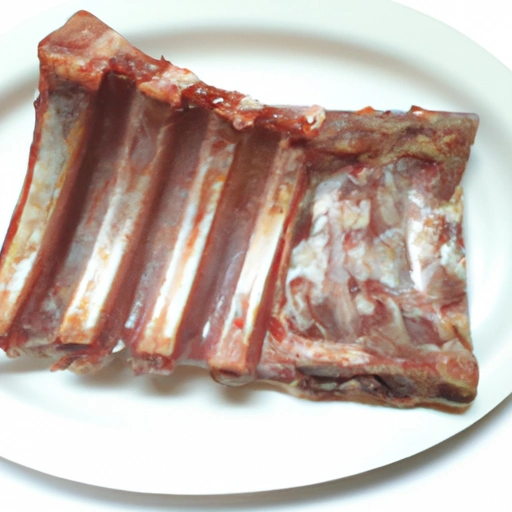Pork Rib
Description

Pork rib is a popular and savory ingredient that comes from the rib section of a pig. This cut is known for its rich marbling of fat, which provides a tender and juicy flavor when cooked. Pork ribs are a staple in various cuisines around the world, and they can be prepared using numerous cooking methods, including grilling, smoking, roasting, and slow-cooking.
Common uses
Pork ribs are commonly used in the preparation of hearty and comforting meals. They are especially prominent in barbecue cuisine, where they are slow-cooked to achieve a tender and fall-off-the-bone texture. Additionally, pork ribs are used in stews, oven-baked dishes, and in various cultural recipes that highlight their rich flavor.
Nutritional value
Calories
A typical serving of pork ribs (approximately 3 to 4 ounces or 85 to 113 grams) contains around 250 to 300 calories, depending on the preparation method and the amount of fat.
Protein
Pork ribs provide a substantial amount of protein, with a single serving offering about 20 to 25 grams, essential for muscle growth and repair.
Fat
This cut of pork is relatively high in fat, with a serving containing about 20 grams of fat, which includes a mix of saturated and unsaturated fats.
Carbohydrates
Pork ribs themselves are virtually free of carbohydrates; however, sauces and marinades can add additional carbs.
Vitamins
Pork ribs are a source of B vitamins, particularly vitamin B6 and B12, which are important for energy metabolism and nervous system health.
Minerals
They also provide essential minerals such as zinc, phosphorus, and selenium, which are vital for various bodily functions.
Health benefits
When consumed in moderation, pork ribs can be a part of a balanced diet. The protein content helps in maintaining muscle mass, while the B vitamins are crucial for various metabolic processes. Additionally, the minerals found in pork ribs, such as zinc and selenium, support immune function and overall health.
Potential risks
The high fat content, especially saturated fat, in pork ribs can pose health risks if consumed excessively. It is important to balance intake with leaner meats and plant-based proteins. Furthermore, those with dietary restrictions or certain health conditions should consult their healthcare provider before including pork ribs in their diet.
Common recipes
Pork ribs are featured in recipes like smoked barbecue ribs, sweet and sour ribs, spare rib stew, and dry-rubbed ribs. They are also a main component in many cultural dishes around the globe.
Cooking methods
Popular methods of cooking pork ribs include grilling, smoking, roasting, braising, and slow-cooking, which help to tenderize the meat and infuse it with flavor.
Pairing with other ingredients
Pork ribs pair well with a variety of flavors and sides, such as smoky barbecue sauce, spicy rubs, coleslaw, cornbread, baked beans, and roasted vegetables.
Summary
Pork ribs are a flavorful and versatile ingredient that can be prepared in countless ways. With their rich taste and satisfying texture, they offer a delightful experience to meat lovers. However, it is important to consume them in moderation due to their high fat content, and to consider dietary preferences and health implications when including pork ribs in meal planning.